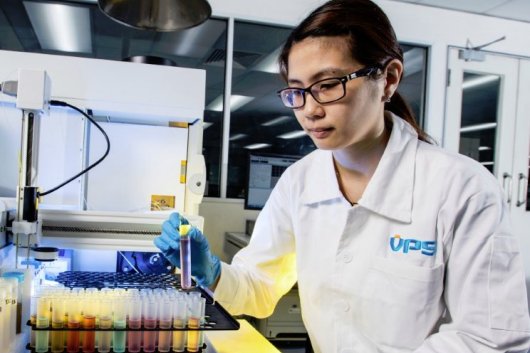VPS launches VLSFO test method for wax appearance temperature
Test designed to help maintain fuel above the WAT to prevent cold-flow problems and wax crystals from forming.
Veritas Petroleum Services (VPS) reports that it has successfully completed R&D work into instrumentation development and test methodology for the creation of a new test method that accurately measures the wax appearance temperature (WAT) of very low-sulphur fuel oils (VLSFOs).
VPS Group Managing Director, Dr Malcolm Cooper, outlines the benefits of this method in a white paper which also includes the laboratory work carried out by VPS Chemist, Dr Joshua Sun. The document is available on demand.
The upcoming implementation of stricter legislation on the sulphur content of marine fuels in 2020 has led to the emergence of new compliant marine fuels with a maximum sulphur content of 0.5 percent. The majority of these fuels are blended products containing a greater level of paraffinic component than previously seen with high-sulphur fuel oils (HSFOs).
As a consequence, VPS explains that these new VLSFOs will exhibit a higher potential for wax to precipitate from the fuel solution due to temperature-related issues, which in turn can cause various operational problems on board a ship.
The temperature at which wax precipitation starts is highly dependent upon chemical composition, which varies significantly from fuel to fuel, VPS notes.
Current test methods do not enable cloud point to be measured for either residual fuels or the new VLSFOs, due to their opacity. As a consequence, pour point is the only cold-flow test available for such fuels, with the instruction to store fuels at least 10 degrees Celsius (deg C) above the tested pour point.
However, due to the higher paraffinic content of VLSFOs, wax may well form within the fuel at a much higher temperature than 10 deg C above pour point, and whilst unseen to the naked eye, this wax is likely to cause fuel storage, handling and transfer problems, VPS points out.
The temperature at which wax crystals form, i.e. the WAT, is the actual cloud point of new VLSFO fuels, and is said to be the most definitive cold-flow property of the fuel to prevent wax precipitation, whilst other cold-flow properties such as pour point or cold filter plugging point occur after wax problems have already occurred with the fuel.
"In order to prevent wax formation within VLSFO fuels, measurement of the Wax Appearance Temperature (WAT) is very important as the WAT varies considerably across the range of the many VLSFO fuels VPS have tested to date. Fuel maintained above the WAT throughout the vessel will prevent cold-flow problems during storage and pumping of the fuel on board the vessel since wax crystal will not form. Therefore, WAT analysis can be a key contributor in avoiding fuel management issues associated with the new VLSFO fuels," VPS stressed.
VPS Group Managing Director, Dr Malcolm Cooper, outlines the benefits of this method in a white paper which also includes the laboratory work carried out by VPS Chemist, Dr Joshua Sun. The document is available on demand.
The upcoming implementation of stricter legislation on the sulphur content of marine fuels in 2020 has led to the emergence of new compliant marine fuels with a maximum sulphur content of 0.5 percent. The majority of these fuels are blended products containing a greater level of paraffinic component than previously seen with high-sulphur fuel oils (HSFOs).
As a consequence, VPS explains that these new VLSFOs will exhibit a higher potential for wax to precipitate from the fuel solution due to temperature-related issues, which in turn can cause various operational problems on board a ship.
The temperature at which wax precipitation starts is highly dependent upon chemical composition, which varies significantly from fuel to fuel, VPS notes.
Current test methods do not enable cloud point to be measured for either residual fuels or the new VLSFOs, due to their opacity. As a consequence, pour point is the only cold-flow test available for such fuels, with the instruction to store fuels at least 10 degrees Celsius (deg C) above the tested pour point.
However, due to the higher paraffinic content of VLSFOs, wax may well form within the fuel at a much higher temperature than 10 deg C above pour point, and whilst unseen to the naked eye, this wax is likely to cause fuel storage, handling and transfer problems, VPS points out.
The temperature at which wax crystals form, i.e. the WAT, is the actual cloud point of new VLSFO fuels, and is said to be the most definitive cold-flow property of the fuel to prevent wax precipitation, whilst other cold-flow properties such as pour point or cold filter plugging point occur after wax problems have already occurred with the fuel.
"In order to prevent wax formation within VLSFO fuels, measurement of the Wax Appearance Temperature (WAT) is very important as the WAT varies considerably across the range of the many VLSFO fuels VPS have tested to date. Fuel maintained above the WAT throughout the vessel will prevent cold-flow problems during storage and pumping of the fuel on board the vessel since wax crystal will not form. Therefore, WAT analysis can be a key contributor in avoiding fuel management issues associated with the new VLSFO fuels," VPS stressed.

|
VARO Energy expands renewable portfolio with Preem acquisition
All-cash transaction expected to complete in the latter half of 2025. |
|
|
|
||

|
NYK trials biofuel in milestone coal carrier test
Vessel is used to test biofuel for domestic utility company. |
|
|
|
||

|
H-Line Shipping orders LNG bunkering vessel
Vessel with 18,000-cbm capacity to run on both LNG and MDO. |
|
|
|
||

|
How to engineer and manage green shipping fuels | Stanley George, VPS
Effective management strategies and insights for evolving fuel use. |
|
|
|
||

|
Swedish government bans scrubber wastewater discharges
Discharges from open-loop scrubbers to be prohibited in Swedish waters from July 2025. |
|
|
|
||

|
MAN Energy Solutions achieves 100% load milestone for ammonia engine
Latest tests validate fuel injection system throughout the entire load curve. |
|
|
|
||
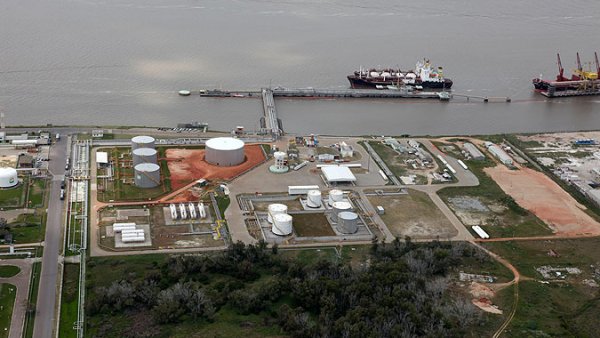
|
Petrobras secures ISCC EU RED certification for B24 biofuel blend at Rio Grande
Blend consisting of 24% FAME is said to have been rigorously tested to meet international standards. |
|
|
|
||
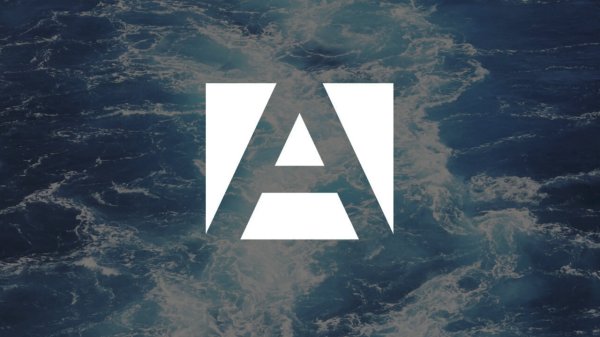
|
Stolt-Nielsen to fully control Avenir LNG with acquisition
Share purchase agreement to buy all shares from Golar LNG and Aequitas. |
|
|
|
||
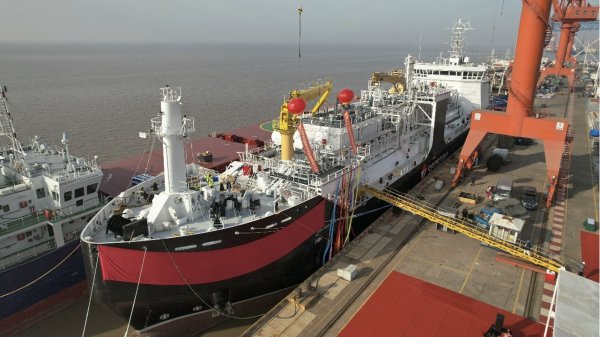
|
Bureau Veritas supports launch of CIMC SOE's LNG bunkering vessel
Handover of Seaspan Energy's cutting-edge 7,600-cbm vessel completed. |
|
|
|
||
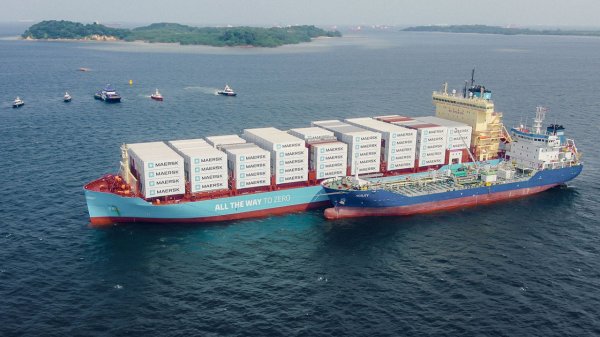
|
Methanol as a marine fuel | Steve Bee, VPS
How environmental legislation has driven the development of low-sulphur fuels and methanol-ready ships. |
|
|
|
||
Related Links
- · Houston marine fuel contamination: VPS reveals exclusive findings [Insights]
- · US East Coast sees nearly half of VPS's global flash point distillate alerts [Insights]
- · VPS issues high sodium fuel alert for Fujairah [Insights]
- · Historical review of VPS Bunker Alerts: Steve Bee [Insights]
- · VPS flags up Singapore delivery shortages and failure to comply with MFM standard [Insights]

